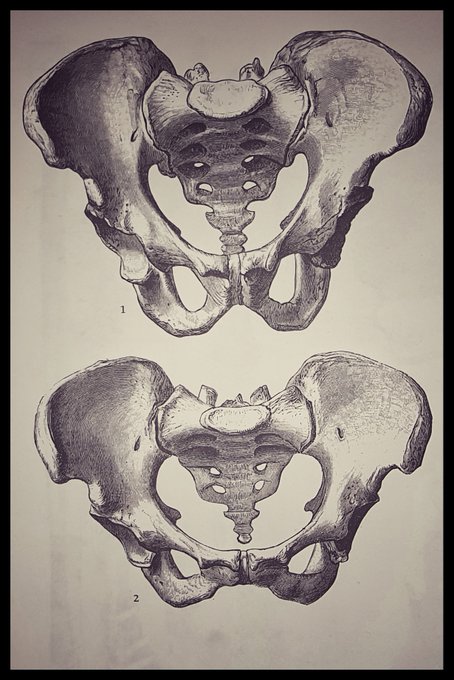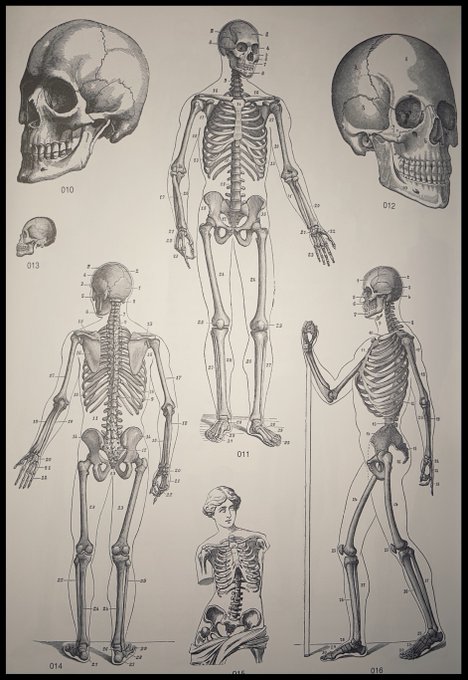oldoptheatreのTwitterイラスト検索結果。 15 件
"By loving friends, you are surrounded. Oh! Be not blind to this, I pray. They wish that joy and mirth unbounded may crown your happy Christmas day!" With best wishes from the #OldOpTheatre Family! We shall see you all in the New Year but until then, #MerryChristmas2022! 🎄🎁
Would you look at this Victorian print of the male (top) and female (bottom) pelvis? The pelvic region is the lower part of the trunk, between the abdomen and the thighs. There you have it! Your #AnatomyTuesday lesson for the human body! 😉 #OldOpTheatre #Histmed #Anatomy
[1/7] We know what you’re thinking … how were strangulated hernias treated in the 19th century?! Well, fear not because we have some answers! A strangulated hernia is a serious medical condition in which tissue pushes through the abdominal wall and...
#oldoptheatre #histmed
Welcome to #AnatomyTuesday! First,take a deep breath! Done? Good! Today we want to show you the anatomy of a Victorian amputation found in George Bell's Illustrations of the Great Operations of Surgery (1821). We are so glad that our copy is not coloured!😱 #histmed #oldoptheatre
Hey there! #DYK? Our doors will open once more on the 5th of December! Our Covid-19 safety protocols are back & a pre-booked #TimeBubble will allow you or your group (of up to 6 people) to stay socially distant from others. Get your tickets👉https://t.co/JtwCv0m5O1 #oldoptheatre
[1/3] Today we'll be talking about grim eye stuff - specifically eye surgery - a topic that so many people are squeamish about! And who can blame them, really, when you look at the sorts of tools Victorian eye surgeons were working with. #histmed #oldoptheatre #eyesurgery
#AnatomyTuesday is here and we just love these old 19th c anatomical illustrations of the human body! Today we take a look at the internal framework of the human body: the #skeleton! These images come from Hartan's Anatomical Illustrations! #histmed #oldoptheatre
Anatomy and physiology are most important disciplines to a surgeon. By the middle of the 18th century, dissection of the dead had become central to surgical education. Continue reading about the Resurrection Men in our blog here 👉https://t.co/3htsiZMv9y
#OldOpTheatre #Histmed
[1/3]The #oldoptheatre #TopFacts are here! Do you know anything about snail water? In 1703, the Hospital appointed royal physician Richard Mead. He regularly published herbal preparations, including Snail Water for venereal disease. #histmed #pharmhist Portrait @FoundlingMuseum
#Midwifery was a developing science in the 18th c. This is the time when men began to practice as more general midwives, much to the offence of many contemporaries who saw it as unnatural. Learn more about one of them here 👉 https://t.co/VZErpfqAOB
#oldoptheatre #histmed…
As part of the #herbgarret's collection, we can finally reveal our curator's A-Z of Herbs used at Old St Thomas' Hospital! We will be sharing one herb per week, but if you cannot wait,you can start checking out our #blog here 👉
https://t.co/fFK6p6fzOk
#pharmhist #oldoptheatre
[Thread 👇] Have you heard about #toothtransplants in the past? They were particularly popular by the 18th c. Why? Sugar abuse! By this period the wealthy classes were hooked on the stuff. And we really mean hooked! 🍰🍰🍰#oldoptheatre #dentistry #histmed
Welcome to #AnatomyTuesday! First, take a deep breath! Done?Good!Today we want to show you the #anatomy of a Victorian amputation found in George Bell's Illustrations of the Great Operations of Surgery (1821).We are so glad that our copy is not coloured! 😱 #oldoptheatre #histmed
We heard on the #oldopgrapevine that a resurrection man associated with St Thomas' by the name of Joseph Naples escaped prison 😱. This is how the newspapers presented the case on the 8th of February, 1804 [Thread 1👇]
#oldoptheatre #bodysnatching
#DYK? Alchemy and medicine were connected in the eatly modern period, since beyond the idea of making gold, #alchemy offered the 'panacea', a medicine capable of healing all diseases. Pics: Medice&Alchemy print, 1512, and our own alembic. #histmed #TheMoreYouKnow #oldoptheatre
















